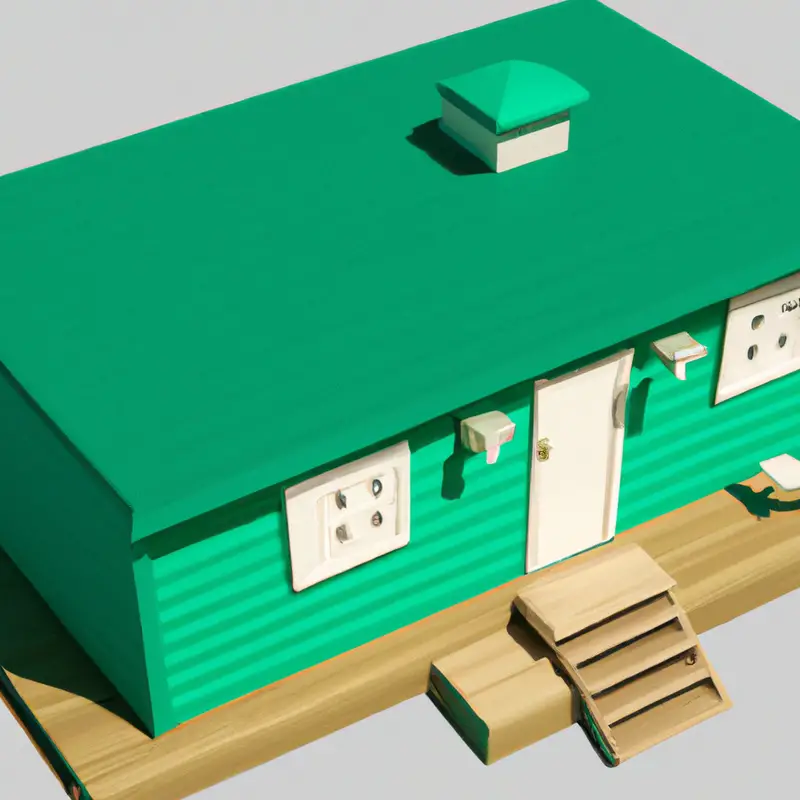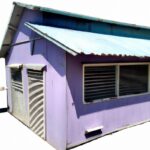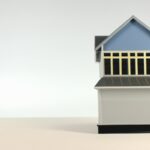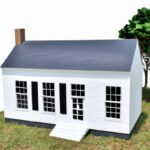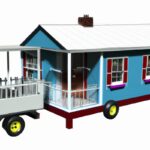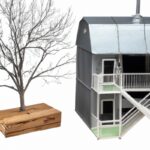Key Takeaways:
- The cost of a tiny house can vary greatly depending on factors such as size, materials, and location.
- On average, tiny houses can range from $20,000 to $150,000 or more.
- Building a tiny house yourself can be a cost-effective option, but hiring a professional builder can ensure higher-quality construction.
- It’s important to consider additional costs such as permits, land, utilities, and customization when budgeting for a tiny house.
Have you ever wondered how much it would cost to live in a tiny house, where every square inch counts? Well, you’re in luck! Today, I’m going to break down the costs involved in building and owning a tiny house.
From the concept of tiny houses to factors influencing their cost, we’ll cover it all.
Plus, I’ll share financing options, average costs, and even considerations beyond the initial price tag. So, if you’re ready to dive into this fascinating world of minimalist living, let’s get started!
Size | Cost Range | Key Features |
|---|---|---|
Tiny House on Wheels | $30,000 – $120,000 | – Mobility – Customizable interior – Off-grid capabilities |
Container Tiny Home | $20,000 – $120,000 | – Durability – Easy transport – Industrial aesthetic |
Small Cabin | $10,000 – $50,000 | – Rustic charm – Efficient use of space – Lower maintenance costs |
DIY Tiny Home | $5,000 – $30,000 | – Cost savings – Satisfaction of building it yourself – Customization options |
Understanding the concept of Tiny Houses
What is a Tiny House?
A Tiny House is a small, fully functional living space that typically ranges from 100 to 400 square feet. These compact homes are designed to prioritize efficiency and minimize waste, making them an eco-friendly option.
They often include a kitchen, bathroom, and sleeping area, while some may have additional features like lofts or storage space.
Tiny Houses can be built on wheels for mobility or placed on a foundation. The minimalist lifestyle and financial freedom associated with Tiny Houses have made them increasingly popular in recent years.
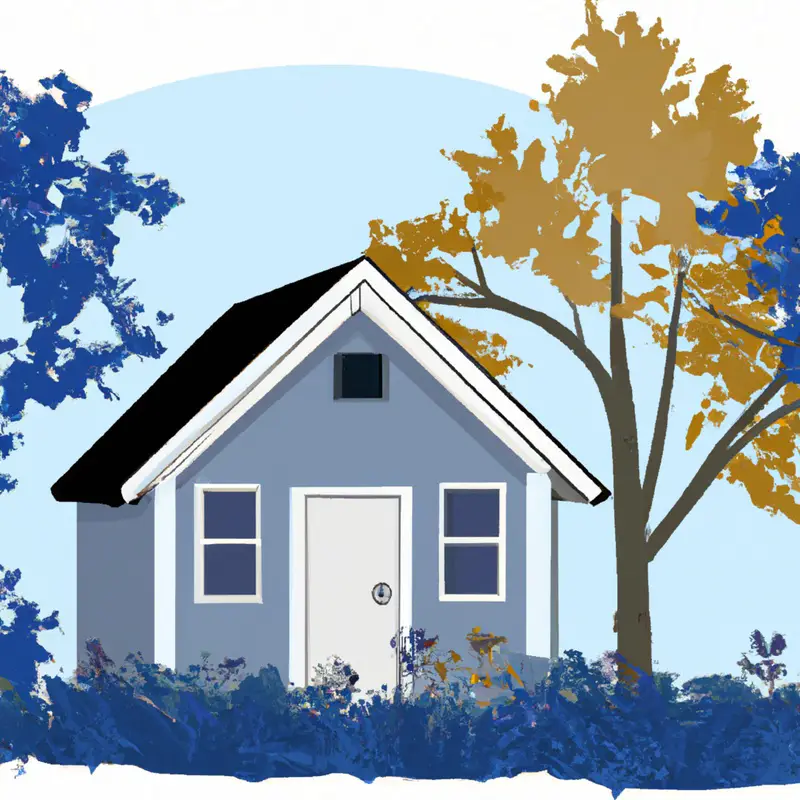
Why are Tiny Houses gaining popularity?
Tiny Houses are gaining popularity due to several reasons.
Firstly, they offer a more affordable and sustainable housing option.
With skyrocketing housing costs, many people are seeking alternative solutions, and Tiny Houses provide a viable option.
Secondly, they promote a minimalist lifestyle, encouraging people to live with less and reduce their carbon footprint.
Thirdly, Tiny Houses are highly customizable and allow people to have a personalized space that meets their specific needs and preferences.
Lastly, Tiny Houses offer a sense of freedom and mobility, as they can be easily moved to different locations.
The combination of affordability, sustainability, customization, and mobility has contributed to the rising popularity of Tiny Houses.
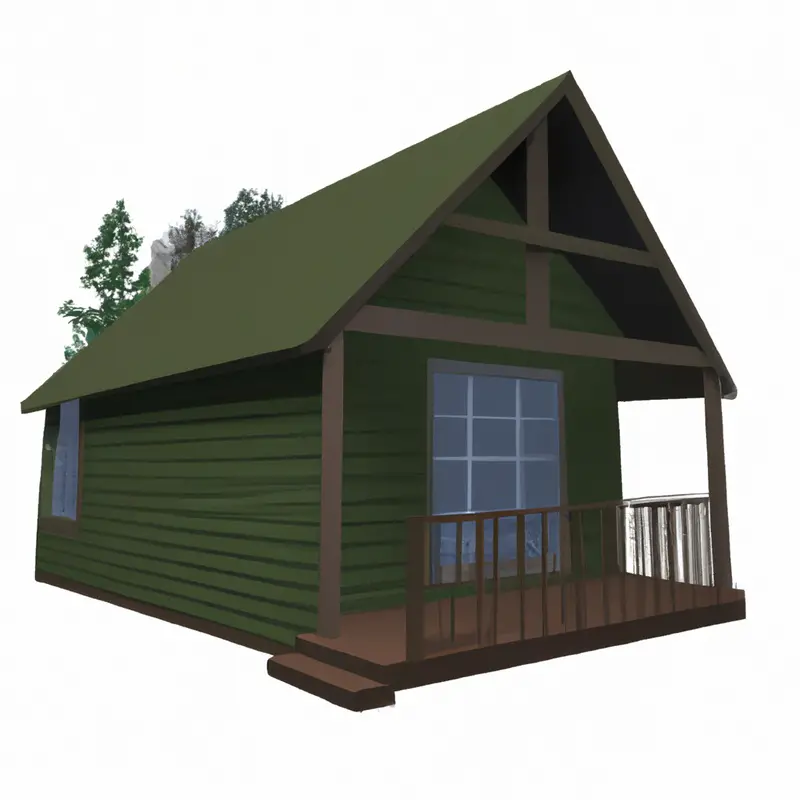
Factors influencing the cost of a Tiny House
Size and layout of the Tiny House
When considering the cost of a Tiny House, the size and layout are important factors.
Smaller Tiny Houses generally cost less than larger ones, as they require fewer materials and are quicker to build.
The layout of the Tiny House also affects the cost, as more complex designs with multiple levels or unique features may require additional time and labor.
Additionally, the layout can influence the overall functionality and livability of the space, so it’s essential to plan accordingly.
Quality of materials used
The quality of materials used is an important factor in determining the cost of a Tiny House.
High-quality materials, such as durable siding, insulation, and roofing, can increase the overall price but also contribute to the longevity and sustainability of the structure.
Additionally, using eco-friendly and energy-efficient materials may result in long-term savings on utility costs.
Consider choosing materials that strike a balance between cost and quality to ensure a well-built and comfortable Tiny House.
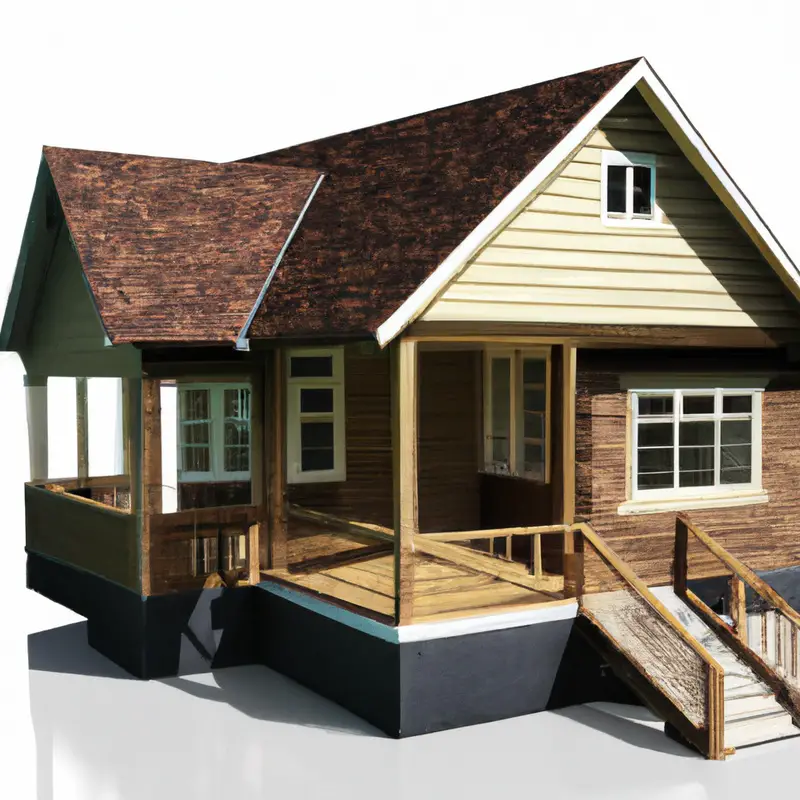
Customization and additional features
The cost of a Tiny House can vary depending on the level of customization and additional features you choose.
Want a unique layout?
Add some custom-built storage solutions?
Or maybe you’re looking for energy-efficient features like solar panels or composting toilets?
These customization options can significantly impact the final price tag.
Additionally, if you opt for high-end finishes or luxury appliances, be prepared to pay a premium.
It’s essential to consider your budget and prioritize the features that matter most to you.
Location and site preparation costs
Location and site preparation costs play a significant role in determining the overall cost of a Tiny House. The location of your Tiny House can affect the cost of land, building permits, and utility connections.
If you choose to build in a remote area, you may need to invest in additional infrastructure such as road access and sewage systems.
Site preparation costs can also include clearing land, leveling the ground, and installing necessary foundations. It’s important to factor in these costs when budgeting for your Tiny House project.
Cost breakdown of building a Tiny House
Materials and construction costs
Materials and construction costs are important factors to consider when building a Tiny House. The cost of materials can vary depending on the type and quality of materials chosen.
This includes everything from the framing and insulation to the roofing and siding.
Construction costs, on the other hand, encompass the labor and expertise required to build the Tiny House. Hiring professionals or opting for a DIY approach can impact these costs.
Additionally, the complexity of the design and any custom features will also affect the overall expenses.
Essential systems and utilities
Essential systems and utilities for a Tiny House include electricity, plumbing, heating, and cooling. These systems are crucial for a comfortable and functional living space.
When it comes to electricity, you’ll need a power source, such as solar panels or a connection to the grid.
Plumbing involves having a water source and a way to dispose of waste, like a composting toilet or a connection to a septic system. For heating and cooling, options such as a wood stove or mini-split system can be considered.
Interior and exterior finishes
Interior and exterior finishes play a significant role in the overall look and feel of a Tiny House.
For the interior, you can choose from a variety of finishes such as paint, wallpaper, or wood paneling to create your desired aesthetic.
Additionally, flooring options like hardwood, laminate, or tile can add style and durability.
When it comes to the exterior, siding materials like cedar, stucco, or metal can enhance the appearance while providing protection from the elements.
Roofing materials such as asphalt shingles or metal panels are essential for durability and weatherproofing.
Don’t forget to consider the windows, doors, and trim, as they can greatly impact the curb appeal of your Tiny House.
And don’t be afraid to get creative with your finishes to make your Tiny House truly unique and personalized!
Furniture and appliances
Furnishing and equipping a tiny house can be a fun and creative process.
When it comes to furniture, consider multifunctional pieces that can serve multiple purposes.
For example, a sofa that can also be used as a pull-out bed, or a coffee table that doubles as storage.
Compact appliances are essential in a tiny house, so opt for smaller versions of items like refrigerators, stoves, and washing machines.
Look for energy-efficient appliances to help save on utility costs.
It’s important to prioritize space and functionality when selecting furniture and appliances for your tiny house.
Alternatives to traditional building methods
DIY versus hiring professionals
When deciding between DIY and hiring professionals for building a Tiny House, it’s important to consider your skills, time, and budget.
DIY: Building a Tiny House yourself can be a rewarding experience, allowing you to customize every aspect and potentially save money.
However, it requires knowledge of construction, time commitment, and access to necessary tools and resources.
Hiring professionals: If you’re not confident in your building skills or prefer a faster and more efficient process, hiring professionals is a good option.
They have the expertise and experience to ensure a quality build, but it may cost more.
Ultimately, the decision depends on your abilities, availability, and budget.
Buying a pre-built Tiny House
Buying a pre-built Tiny House is a convenient option for those who want to skip the construction process. Pre-built Tiny Houses are already constructed and can be delivered to your desired location.
This saves you time and effort, as you won’t have to worry about building permits, finding contractors, or managing the construction process.
Additionally, pre-built Tiny Houses often come with the basic amenities and finishes already installed, allowing you to move in right away. Just make sure to do thorough research and choose a reputable manufacturer or builder.
Repurposing and remodeling existing structures
Repurposing and remodeling existing structures is a cost-effective and sustainable alternative to traditional building methods for a Tiny House. It allows you to take advantage of already existing spaces, such as garages, sheds, or even shipping containers, and transform them into your dream home.
With some creativity and careful planning, you can adapt and modify the structure to fit your needs and preferences.
This option not only reduces construction costs but also minimizes waste and environmental impact. Plus, repurposing and remodeling can add character and unique features to your Tiny House.
Average cost of a Tiny House
National average range
The national average range for the cost of a Tiny House is between $30,000 and $100,000.
This range can vary depending on factors such as size, materials used, customization, and location.
It’s important to note that this is just an average and prices can be higher or lower depending on individual circumstances.
Regional cost variations
Regional cost variations play a significant role in determining the cost of a tiny house. The price can vary depending on the location and cost of living in different regions.
Generally, urban areas tend to have higher labor and material costs, resulting in a higher price for a tiny house.
Additionally, certain regions may have stricter building codes or zoning regulations, which can also impact the overall cost. It’s essential to research and consider these regional factors when budgeting for a tiny house.
High-end versus budget-friendly options
High-end Tiny Houses are designed with luxurious finishes and high-quality materials, offering a more upscale and refined living experience.
These houses often include premium appliances, custom built-ins, and top-notch craftsmanship.
However, the cost of a high-end Tiny House can be significantly higher than a budget-friendly option.
On the other hand, budget-friendly Tiny Houses are designed to be more affordable, focusing on simplicity and function rather than extravagant features.
These houses often utilize cost-effective materials and standard finishes, resulting in a lower price tag.
While they may lack the high-end amenities, budget-friendly options still provide a cozy and efficient living space.
Ultimately, the choice between a high-end and budget-friendly Tiny House depends on your personal preferences, lifestyle, and budget.
Both options offer the opportunity to embrace a minimalist lifestyle and enjoy the benefits of living in a compact and sustainable home.
Financing and budgeting for a Tiny House
Financing options for Tiny Houses
There are various financing options available for Tiny Houses.
One option is to secure a personal loan from a bank or credit union.
Another option is to use a credit card for smaller purchases or to cover the cost of materials.
Some individuals choose to save up and pay for their Tiny House in cash.
Rent-to-own programs and leasing options are also available in certain cases.
Additionally, crowdfunding and partnerships can be explored for funding assistance.
It’s important to research these options and choose the one that best suits your financial situation.
Creating a realistic budget
Creating a realistic budget for your Tiny House is an important step in the planning process.
Here are a few key considerations to help you get started:
- Determine your overall budget: Take a look at your finances and decide how much you can comfortably spend on your Tiny House project.
- Research costs: Gather information on the average costs of materials, labor, and essential systems for Tiny Houses in your area. This will give you a general idea of what to expect.
- Break down expenses: Divide your budget into categories such as materials, construction, essential systems, finishes, furniture, and appliances. This will help you allocate funds accordingly.
- Factor in additional costs: Don’t forget to include expenses such as permits, site preparation, utilities, and landscaping. These costs can vary depending on your location and specific needs.
- Be realistic: While it’s important to stay within your budget, remember to allow some flexibility for unexpected expenses or changes along the way.
By carefully considering these factors and creating a realistic budget, you’ll be better equipped to manage your Tiny House project financially.
Potential cost-saving strategies
To save costs while building a Tiny House, consider these strategies:
- Opt for a smaller size: Choosing a smaller footprint will reduce both construction and material costs.
- Use reclaimed materials: Salvaged materials or repurposed items can add character to your Tiny House while cutting down on expenses.
- DIY where possible: Taking on some of the construction or finishing work yourself can save money on labor costs.
- Research affordable suppliers: Shop around for competitive prices on building materials, appliances, and fixtures.
- Maximize energy efficiency: Incorporating energy-saving features like insulation, LED lighting, and solar panels can lower long-term utility costs.
- Minimize customization: Limiting excessive customization and focusing on essential features can help keep expenses in check.
Considerations beyond the initial cost
Ongoing maintenance and repairs
Ongoing maintenance and repairs are important aspects to consider when owning a Tiny House. Regular maintenance, such as cleaning and inspections, helps to prevent larger issues down the line.
Repairs may be necessary for things like plumbing, electrical, or structural problems.
It’s important to stay on top of these tasks to ensure the longevity and functionality of your Tiny House. Hiring professionals or learning DIY skills can help with these ongoing responsibilities.
Remember to also factor in the costs of maintenance and repairs when budgeting for your Tiny House.
Utility and land expenses
Utility and land expenses are important considerations when calculating the overall cost of a Tiny House. Utility expenses include electricity, water, and sewer connections, which will vary depending on location and usage.
Land expenses include purchasing or leasing the land on which the Tiny House will be placed, as well as any necessary site preparation costs such as leveling or landscaping.
These expenses should be factored into the budget to ensure a realistic and comprehensive understanding of the total cost of owning and maintaining a Tiny House.
Legal and zoning regulations
When building or living in a Tiny House, it’s important to understand the legal and zoning regulations that may apply. These regulations vary depending on your location and can impact where you can park or place your Tiny House.
Building codes and permits may also be required.
To ensure compliance, consult with local authorities or professionals in the field. Additionally, consider the specific restrictions or requirements related to land use, size limitations, and occupancy rules.
Staying informed about these regulations is vital to avoid potential legal issues and enjoy your Tiny House experience.
Final Verdict
The cost of a Tiny House is influenced by various factors such as size, materials, customization, and location.
Building a Tiny House involves expenses for materials, construction, essential systems, finishes, and furniture.
There are alternatives to traditional building methods, including DIY, buying a pre-built house, and repurposing existing structures.
The average cost of a Tiny House varies nationally and regionally, with options ranging from high-end to budget-friendly.
It is crucial to consider financing options, create a realistic budget, and be aware of ongoing expenses like maintenance, utilities, and legal regulations.
Overall, the cost of a Tiny House should be carefully evaluated and planned to ensure a successful and affordable investment.
